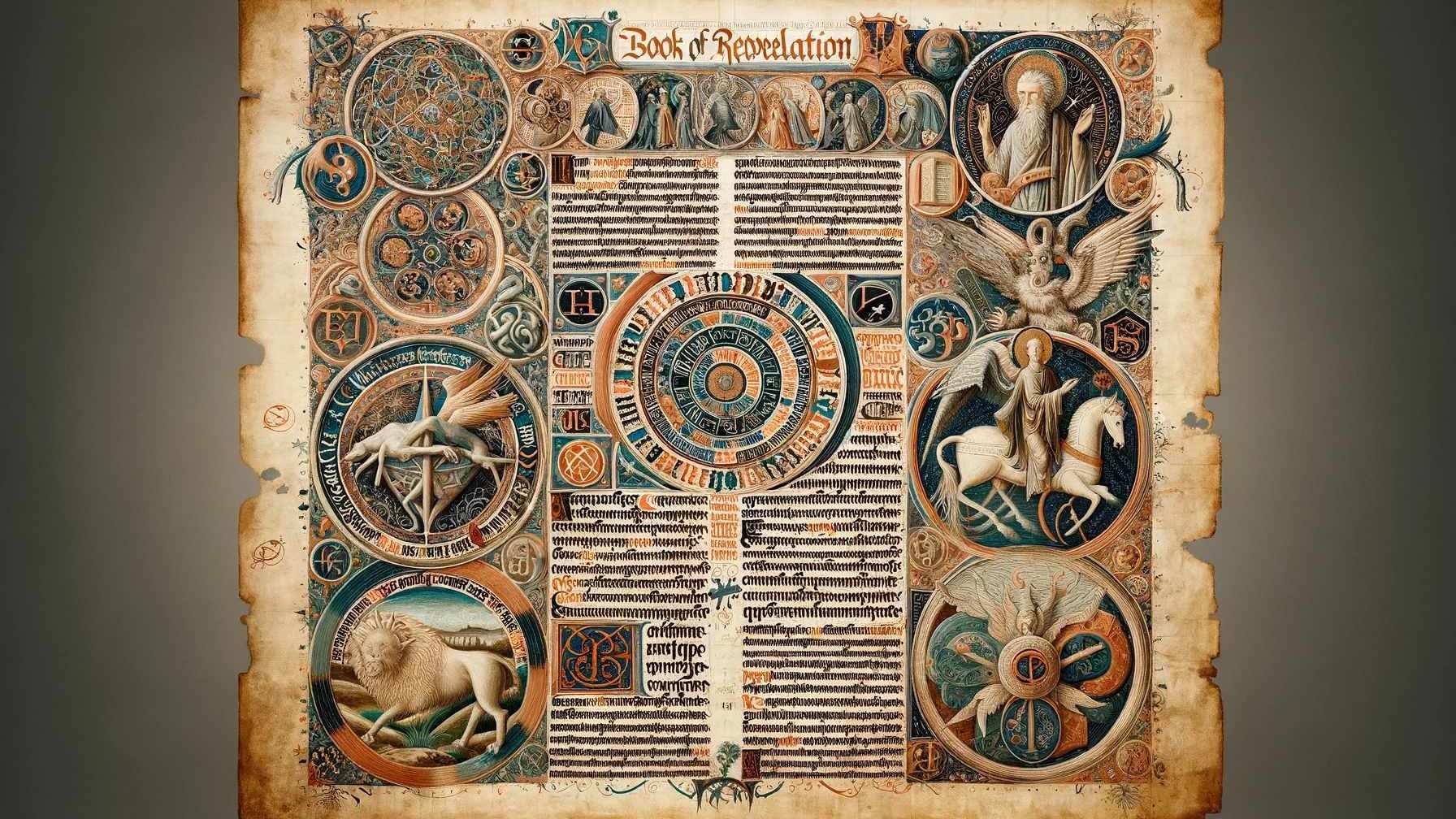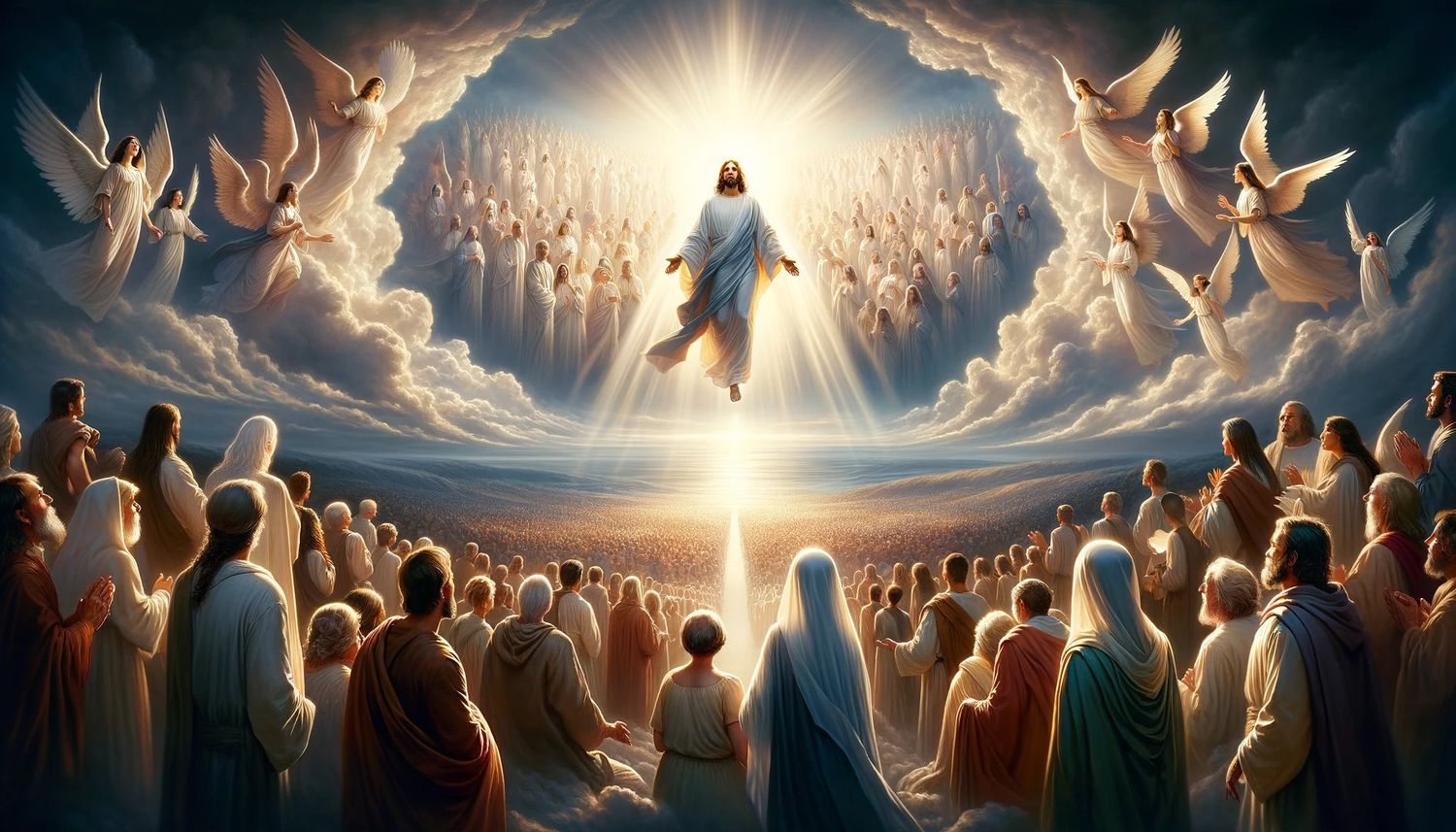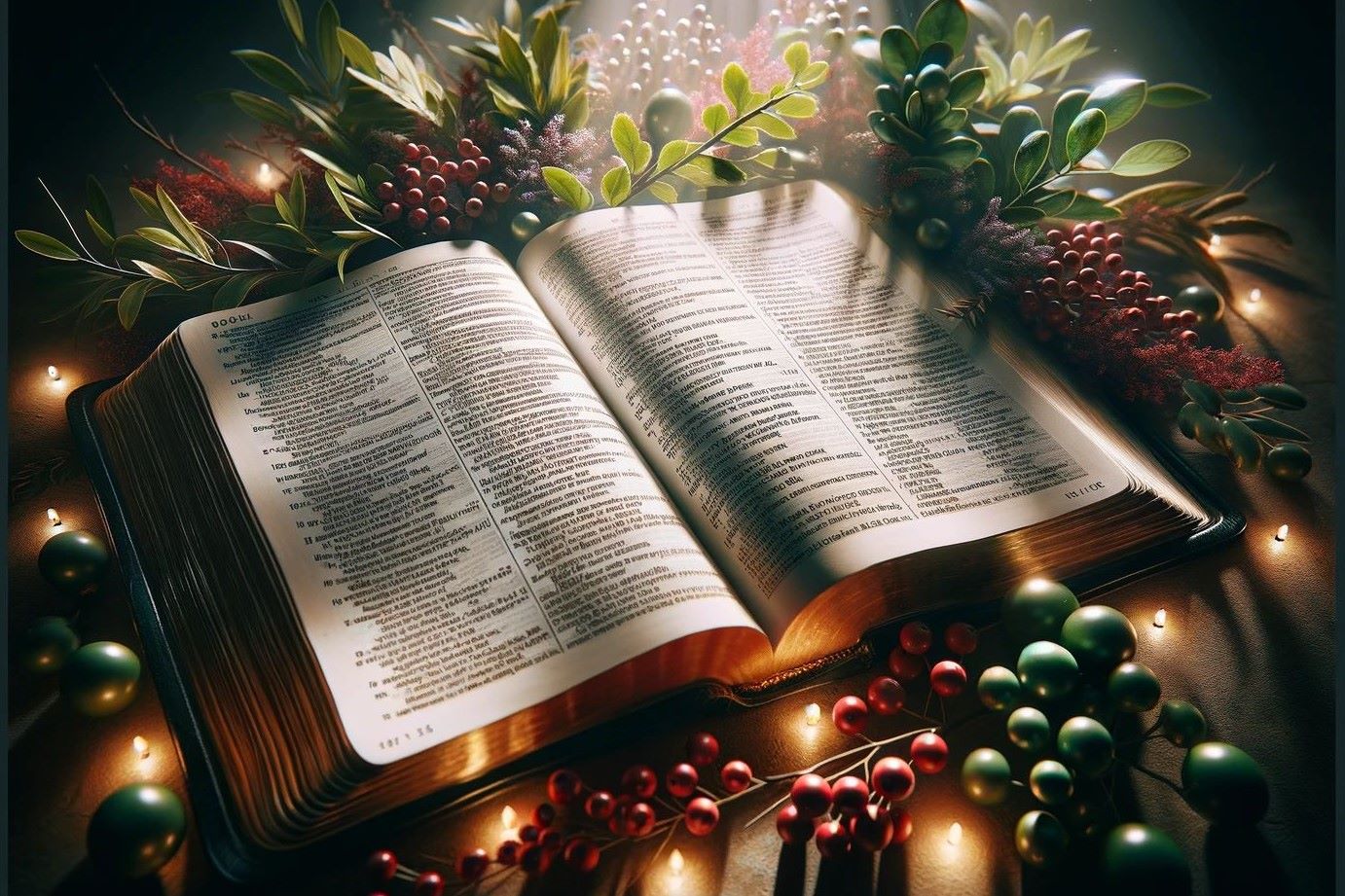Home>Bible Facts>What Does The Book Of Revelation Say About The End Of The World


Bible Facts
What Does The Book Of Revelation Say About The End Of The World
Published: February 11, 2024
Ericka Andersen, an editor at Christian.net, expertly merges digital strategy with content creation, focusing on faith and societal issues. Her communication skills enhance the platform's engaging narratives, fostering meaningful dialogue on belief's impact on society.
Discover what the Book of Revelation reveals about the end times and gain valuable insights into biblical facts and prophecies. Explore the significance of the apocalypse and its relevance today.
(Many of the links in this article redirect to a specific reviewed product. Your purchase of these products through affiliate links helps to generate commission for Christian.net, at no extra cost. Learn more)
Table of Contents
Introduction
The Book of Revelation, the final book of the New Testament, is a profound and enigmatic text that has captivated readers for centuries. Also known as the Apocalypse of John, this book offers a compelling and vivid portrayal of the end times, providing insight into the ultimate destiny of humanity and the cosmic battle between good and evil.
Revelation is a unique blend of apocalyptic literature, prophecy, and symbolism, presenting a series of visions and prophecies that offer a glimpse into the culmination of human history. Written by the apostle John while exiled on the island of Patmos, this book serves as a powerful testament to the sovereignty of God and the ultimate triumph of righteousness over wickedness.
The imagery and symbolism employed in Revelation are both awe-inspiring and mysterious, drawing readers into a world of cosmic conflict and divine intervention. Through its vivid descriptions and allegorical narratives, the book invites readers to contemplate the profound mysteries of existence and the ultimate purpose of human life.
As we delve into the intricate tapestry of Revelation, we are confronted with a rich tapestry of themes, including the sovereignty of God, the perseverance of the saints, and the ultimate defeat of evil. The book serves as a source of comfort and encouragement for believers, assuring them that, despite the trials and tribulations of the world, God remains in control and will ultimately bring about justice and redemption.
In the subsequent sections of this article, we will embark on a journey through the apocalyptic visions of Revelation, exploring the symbolism of the four horsemen of the apocalypse, the significance of the seven seals and seven trumpets, the ominous mark of the beast, the climactic battle of Armageddon, and the glorious promise of a new heaven and new earth. Through this exploration, we will gain a deeper understanding of the profound truths and enduring relevance of the Book of Revelation.
The Apocalyptic Vision of Revelation
The Book of Revelation opens with a captivating vision of the exalted Christ, who appears to the apostle John in a transcendent display of divine glory. John, exiled on the island of Patmos, receives a series of profound revelations that offer a glimpse into the ultimate destiny of humanity and the cosmic battle between good and evil.
The apocalyptic nature of Revelation is characterized by its vivid and symbolic imagery, which serves as a powerful vehicle for conveying profound spiritual truths. The visionary narrative unfolds with striking scenes of heavenly worship, the opening of seals, the sounding of trumpets, and the pouring out of bowls, each unveiling a new aspect of the divine plan for the culmination of human history.
Central to the apocalyptic vision of Revelation is the portrayal of cosmic conflict, in which the forces of darkness, personified by the dragon, the beast, and the false prophet, wage war against the righteous and the faithful. This epic struggle between good and evil unfolds on a grand scale, encompassing both earthly and heavenly realms, and culminates in the ultimate victory of God and His saints.
The apocalyptic imagery of Revelation also includes visions of celestial wonders, such as the woman clothed with the sun, the great red dragon, and the heavenly Jerusalem descending as a bride adorned for her husband. These awe-inspiring symbols convey profound spiritual truths and offer a glimpse into the transcendent realities of the divine realm.
Throughout the apocalyptic vision of Revelation, the theme of divine judgment and redemption looms large, as the righteous are vindicated, the wicked are held accountable, and the ultimate triumph of God's kingdom is assured. The book's apocalyptic symbolism serves to inspire hope, strengthen faith, and instill confidence in the ultimate victory of righteousness over evil.
In essence, the apocalyptic vision of Revelation offers a compelling portrayal of the cosmic drama unfolding at the culmination of human history, inviting readers to contemplate the profound mysteries of existence and the ultimate purpose of human life. It serves as a powerful testament to the sovereignty of God and the enduring hope of redemption, assuring believers that, despite the trials and tribulations of the world, the divine plan is unfolding according to His perfect will.
The Four Horsemen of the Apocalypse
The iconic imagery of the Four Horsemen of the Apocalypse is one of the most enduring and evocative elements of the Book of Revelation. These enigmatic figures, each riding a different colored horse, symbolize powerful forces that will bring about significant events during the end times. As the seals are opened, the four horsemen are unleashed, heralding the onset of divine judgment and the unfolding of apocalyptic events.
The first horseman, riding a white horse, represents conquest or the spread of false religion and deceptive ideologies. This figure embodies the allure of false peace and the propagation of spiritual deception, leading many astray with persuasive yet deceitful doctrines.
The second horseman, mounted on a fiery red horse, symbolizes war and conflict. As this horseman gallops forth, he brings with him the ravages of warfare, bloodshed, and the breakdown of peace. His presence signifies the escalation of global turmoil and the devastating impact of human aggression.
The third horseman, riding a black horse, embodies famine and scarcity. With scales in hand, this figure represents the scarcity of essential resources, economic hardship, and widespread deprivation. His arrival signals the onset of widespread hunger and economic instability, further exacerbating the tribulations of the end times.
The fourth horseman, mounted on a pale horse, personifies death and pestilence. This chilling figure wields the power to bring about widespread mortality, disease, and the specter of death on a global scale. His grim presence underscores the harrowing consequences of the preceding horsemen's actions, as death and Hades follow closely in his wake.
The symbolism of the Four Horsemen of the Apocalypse serves as a sobering reminder of the profound upheaval and tribulation that will characterize the end times. Their ominous presence underscores the gravity of the events unfolding during this climactic period, serving as a stark warning and a call to spiritual vigilance and preparedness.
As the Four Horsemen ride forth, their symbolic significance resonates with timeless relevance, offering profound insights into the nature of human suffering, the consequences of spiritual deception, and the ultimate triumph of divine justice. Their enduring portrayal in the Book of Revelation continues to captivate and provoke contemplation, serving as a poignant reminder of the profound truths and enduring relevance of apocalyptic literature.
The Seven Seals and Seven Trumpets
The Book of Revelation introduces a series of profound and symbolic events through the imagery of the seven seals and seven trumpets, each unveiling a significant aspect of the divine plan for the culmination of human history. These seals and trumpets serve as powerful symbols of divine judgment, cosmic upheaval, and the ultimate triumph of righteousness over evil.
The opening of the seven seals initiates a sequence of apocalyptic events, each revealing a facet of the unfolding divine plan. As the seals are broken, they unleash a series of cataclysmic occurrences, including the emergence of the Four Horsemen of the Apocalypse, the martyrdom of the faithful, and the cosmic disturbances that herald the onset of divine judgment.
Subsequently, the sounding of the seven trumpets heralds the onset of further apocalyptic events, each trumpet blast unleashing divine judgments and cosmic upheaval upon the earth. These trumpet judgments bring forth devastating phenomena, including hail and fire mingled with blood, the poisoning of waters, celestial disturbances, and the release of demonic forces, each serving as a portent of the impending culmination of human history.
The symbolism of the seven seals and seven trumpets underscores the profound nature of the events unfolding during the end times, conveying the gravity of divine judgment and the cosmic upheaval that will characterize this climactic period. These symbolic visions serve as a powerful reminder of the ultimate sovereignty of God and the assurance of His ultimate triumph over the forces of darkness.
As the sequence of seals and trumpets unfolds, the imagery and symbolism employed in Revelation convey a profound message of divine justice, redemption, and the ultimate vindication of the righteous. The cataclysmic events depicted in these visions serve as a potent reminder of the consequences of human rebellion and the assurance of divine retribution against the forces of evil.
In essence, the symbolism of the seven seals and seven trumpets in the Book of Revelation serves as a powerful testament to the sovereignty of God and the ultimate fulfillment of His divine plan. These apocalyptic visions convey a message of hope, assurance, and the ultimate triumph of righteousness, inspiring believers to remain steadfast in the face of tribulation and to place their trust in the ultimate victory of God's kingdom.
The Mark of the Beast
The concept of the Mark of the Beast, as depicted in the Book of Revelation, has long intrigued and captivated readers, sparking fervent speculation and contemplation. This enigmatic symbol, described in Revelation 13:16-18, represents a mark placed on the right hand or forehead, without which individuals are unable to engage in commerce or trade. The mark is intricately linked to the ominous figure of the beast, a malevolent entity that embodies the forces of evil and deception.
The Mark of the Beast symbolizes allegiance to the oppressive and tyrannical systems of the world, compelling individuals to conform to ideologies and practices that stand in direct opposition to the divine will. Its imposition represents a perversion of true worship and an affront to the sovereignty of God, compelling individuals to compromise their spiritual integrity in exchange for temporal security and material sustenance.
This ominous mark serves as a stark warning against the seductive allure of worldly power and the deceptive enticements of the forces of darkness. It represents a test of faith and loyalty, as individuals are confronted with the choice between unwavering devotion to God and succumbing to the pressures of a corrupt and oppressive system.
The symbolism of the Mark of the Beast resonates with timeless relevance, serving as a cautionary reminder of the enduring struggle between the forces of light and darkness. It underscores the profound spiritual implications of aligning oneself with ideologies and systems that stand in opposition to the divine truth, compelling readers to contemplate the implications of compromising one's faith for the sake of temporal gain.
The Mark of the Beast also serves as a potent symbol of persecution and spiritual warfare, as those who refuse to accept it face ostracism, deprivation, and persecution. Their steadfast refusal to compromise their faith stands as a testament to the enduring power of spiritual conviction and the ultimate triumph of righteousness over evil.
In essence, the Mark of the Beast serves as a powerful symbol of spiritual discernment and unwavering faith, challenging readers to remain steadfast in their devotion to God and to resist the allure of deceptive and oppressive systems. Its portrayal in the Book of Revelation continues to provoke contemplation and inspire vigilance, serving as a poignant reminder of the enduring relevance of apocalyptic literature and the timeless struggle between the forces of light and darkness.
The Battle of Armageddon
The Battle of Armageddon, as depicted in the Book of Revelation, stands as a climactic and awe-inspiring portrayal of the ultimate cosmic conflict between the forces of good and evil. This apocalyptic battle unfolds as a pivotal event during the end times, serving as a dramatic culmination of divine judgment and the ultimate triumph of righteousness over wickedness.
The imagery of the Battle of Armageddon evokes a grand and cataclysmic confrontation, in which the forces of darkness, led by the beast and the false prophet, gather to wage war against the righteous and the faithful. This epic struggle unfolds on a cosmic scale, encompassing both earthly and heavenly realms, and serves as a potent symbol of the enduring conflict between the divine and the diabolical.
The setting of this apocalyptic battle is the plain of Megiddo, a location steeped in historical and biblical significance. The name "Armageddon" itself has become synonymous with the concept of a final, decisive confrontation, evoking images of cosmic upheaval and divine intervention. The Battle of Armageddon represents the ultimate showdown between the forces of darkness and the triumphant return of Christ as the conquering King.
As the forces of evil amass their strength and unleash their malevolent fury, the stage is set for a dramatic and decisive intervention by the divine. The triumphant return of Christ, accompanied by the hosts of heaven, heralds the ultimate defeat of the forces of darkness and the establishment of God's eternal kingdom. The Battle of Armageddon serves as a powerful testament to the sovereignty of God and the ultimate vindication of the righteous.
The symbolism of this apocalyptic battle resonates with profound spiritual significance, conveying a message of hope, assurance, and the ultimate triumph of righteousness. It serves as a potent reminder of the enduring struggle between the forces of light and darkness, inspiring believers to remain steadfast in the face of tribulation and to place their trust in the ultimate victory of God's kingdom.
In essence, the Battle of Armageddon stands as a vivid and compelling portrayal of the cosmic conflict that will unfold during the end times, offering profound insights into the ultimate destiny of humanity and the assurance of divine justice. Its enduring portrayal in the Book of Revelation continues to captivate and provoke contemplation, serving as a poignant reminder of the profound truths and enduring relevance of apocalyptic literature.
The New Heaven and New Earth
The Book of Revelation culminates in a breathtaking vision of the new heaven and new earth, a profound and awe-inspiring portrayal of the ultimate destiny of humanity and the cosmos. This climactic vision represents the culmination of divine redemption and the fulfillment of God's eternal plan for creation. As the apocalyptic narrative unfolds, the imagery of the new heaven and new earth serves as a powerful testament to the transformative power of divine grace and the promise of a restored and perfected reality.
In this transcendent vision, the apostle John beholds a new heaven and a new earth, for the first heaven and the first earth had passed away. The imagery of this new creation evokes a sense of renewal, restoration, and divine re-creation, symbolizing the complete transformation of the cosmos into a state of unblemished perfection. The new heaven and new earth represent the ultimate fulfillment of God's redemptive purpose, where righteousness dwells and the effects of sin and corruption are forever eradicated.
Central to this vision is the portrayal of the holy city, the new Jerusalem, descending from heaven as a bride adorned for her husband. This celestial city represents the consummation of God's eternal dwelling with humanity, a place where God will dwell with His people, and they will be His own. The imagery of the new Jerusalem conveys a sense of divine intimacy, communion, and eternal fellowship, symbolizing the ultimate union between God and His redeemed creation.
The new heaven and new earth also resonate with the promise of the abolition of sorrow, pain, and death, as God wipes away every tear from their eyes, and there shall be no more death, nor sorrow, nor crying. This profound imagery conveys the assurance of eternal joy, peace, and wholeness, as the effects of sin and suffering are forever vanquished in the divine reality of the new creation.
In essence, the vision of the new heaven and new earth serves as a powerful testament to the ultimate triumph of divine redemption and the assurance of God's eternal victory over the forces of darkness. It offers a glimpse into the transcendent realities of the divine realm, inspiring hope, assurance, and the promise of a future where God's redemptive purposes are fully realized. The imagery of the new heaven and new earth continues to captivate and inspire believers, serving as a poignant reminder of the enduring relevance and profound truths of apocalyptic literature.
Conclusion
The Book of Revelation stands as a timeless and profound testament to the enduring power of apocalyptic literature, offering a captivating portrayal of the ultimate destiny of humanity and the cosmic battle between good and evil. Through its vivid imagery, symbolic visions, and profound spiritual truths, Revelation invites readers to contemplate the profound mysteries of existence and the ultimate purpose of human life.
As we journey through the apocalyptic visions of Revelation, we are confronted with a rich tapestry of themes, including the sovereignty of God, the perseverance of the saints, and the ultimate defeat of evil. The iconic symbolism of the Four Horsemen of the Apocalypse, the cataclysmic events unleashed by the seven seals and seven trumpets, the ominous concept of the Mark of the Beast, the climactic Battle of Armageddon, and the breathtaking vision of the new heaven and new earth collectively convey a message of hope, assurance, and the ultimate triumph of righteousness over evil.
The enduring relevance of Revelation lies in its ability to inspire faith, instill courage, and offer a profound sense of hope in the face of tribulation and uncertainty. Its apocalyptic imagery serves as a poignant reminder of the enduring struggle between the forces of light and darkness, compelling readers to remain steadfast in their devotion to God and to resist the allure of deceptive and oppressive systems.
Ultimately, the Book of Revelation stands as a powerful testament to the sovereignty of God and the assurance of His ultimate victory over the forces of darkness. Its enduring portrayal of cosmic conflict, divine intervention, and the promise of a new heaven and new earth continues to captivate and provoke contemplation, serving as a poignant reminder of the profound truths and enduring relevance of apocalyptic literature.
In the grand tapestry of human history, Revelation offers a glimpse into the ultimate fulfillment of God's redemptive purpose, assuring believers that, despite the trials and tribulations of the world, the divine plan is unfolding according to His perfect will. As we contemplate the profound truths and enduring relevance of the Book of Revelation, we are reminded of the timeless message of hope, assurance, and the ultimate triumph of righteousness over evil, inspiring us to embrace faith, courage, and unwavering devotion to the divine amidst the complexities of the world.














